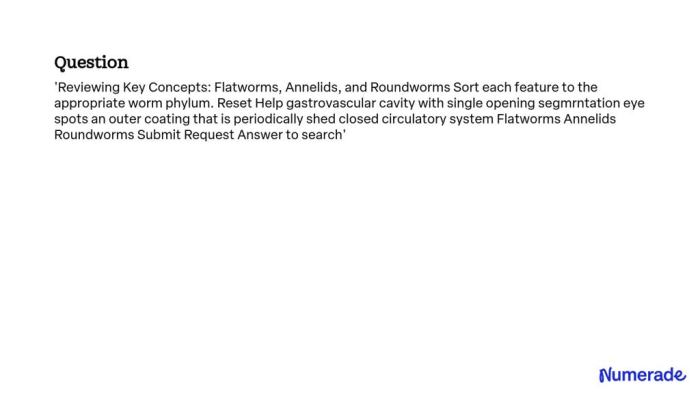Which of the following is true about the phylum Cnidaria? This question delves into the fascinating world of these aquatic invertebrates, showcasing their unique characteristics, diverse forms, and ecological significance. Cnidarians, including jellyfish, corals, and sea anemones, exhibit an array of adaptations that have allowed them to thrive in marine environments for millions of years.
Their distinctive body plan, armed with stinging cells called nematocysts, sets them apart from other animal groups. Cnidarians possess a radial symmetry and a gastrovascular cavity, which serves both for digestion and circulation. This Artikel explores the captivating world of Cnidaria, examining their classification, feeding strategies, reproduction, nervous system, symbiotic relationships, and ecological importance.
General Characteristics of Cnidaria

Cnidarians exhibit a unique body plan and radial symmetry. Their bodies are typically sac-like or polyp-shaped, with a central gastrovascular cavity surrounded by tentacles. The tentacles contain specialized stinging cells called nematocysts, which are used for capturing prey and defense.
Cnidarians have a simple cellular organization. Their bodies are composed of two main cell layers: the ectoderm and endoderm. Between these layers is a gelatinous substance called mesoglea, which provides support and flexibility.
Nematocysts are specialized cells that contain a coiled thread. When triggered, the thread is rapidly ejected and can inject a toxin into the prey. Nematocysts are essential for capturing food and defending against predators.
Classification and Diversity

Cnidarians are divided into four major classes:
- Hydrozoa:Mostly colonial, with polyp and medusa stages; includes jellyfish and hydroids.
- Scyphozoa:Mostly free-swimming, with only a medusa stage; includes jellyfish.
- Cubozoa:Box-shaped jellyfish with powerful nematocysts; known for their venomous stings.
- Anthozoa:Exclusively polyp-forming; includes sea anemones, corals, and sea pens.
Cnidarians are found in a wide range of marine habitats, from shallow coastal waters to deep-sea environments. They play an important role in marine ecosystems as predators, prey, and habitat providers.
Feeding and Digestion: Which Of The Following Is True About The Phylum Cnidaria

Cnidarians employ various feeding mechanisms:
- Suspension feeding:Filter-feeding through tentacles with nematocysts (e.g., jellyfish).
- Predatory feeding:Using nematocysts to capture and ingest prey (e.g., sea anemones).
- Symbiotic feeding:Forming mutualistic relationships with algae or bacteria (e.g., corals).
The gastrovascular cavity is a multifunctional digestive organ. Food is ingested through the mouth and enters the gastrovascular cavity, where it is digested extracellularly by enzymes. The digested nutrients are then absorbed by the gastrodermal cells lining the cavity.
Reproduction and Life Cycle
Cnidarians exhibit both asexual and sexual reproduction.
- Asexual reproduction:Budding or fragmentation, resulting in genetically identical offspring.
- Sexual reproduction:Release of gametes (eggs and sperm) into the water, resulting in fertilization and the formation of a planula larva.
The planula larva eventually settles and develops into a polyp, which can then undergo asexual reproduction or develop into a medusa through a process called strobilation. The medusa is a free-swimming reproductive stage that releases gametes.
Alternation of generations, involving both polyp and medusa stages, is a common life cycle pattern in cnidarians.
Nervous System and Sensory Perception
Cnidarians have a simple nervous system consisting of a nerve net and sensory cells.
- Nerve net:A network of nerve fibers that allows for basic communication and coordination.
- Sensory cells:Located in the tentacles and body wall, they detect stimuli such as touch, light, and chemicals.
Cnidarians respond to stimuli by contracting their muscles, changing their shape, or releasing nematocysts.
Symbiotic Relationships
Cnidarians form various symbiotic relationships:
- Mutualism:Symbiotic relationship between algae and corals, where the algae provide nutrients to the coral and the coral provides shelter and protection to the algae.
- Commensalism:One species benefits from the relationship without harming the other (e.g., hermit crabs living in sea anemones).
- Parasitism:One species benefits at the expense of the other (e.g., parasitic jellyfish that attach to fish).
These symbiotic interactions play a significant role in the ecology and diversity of marine ecosystems.
Questions and Answers
What is the defining characteristic of Cnidaria?
The defining characteristic of Cnidaria is the presence of nematocysts, specialized stinging cells used for capturing prey and defense.
How do Cnidarians feed?
Cnidarians employ various feeding mechanisms, including filter feeding, where they capture suspended food particles, and active predation, where they use nematocysts to paralyze and capture prey.
What is the significance of the gastrovascular cavity in Cnidarians?
The gastrovascular cavity in Cnidarians serves a dual function, acting as both a digestive system and a circulatory system, facilitating the breakdown and distribution of nutrients throughout the body.
How do Cnidarians reproduce?
Cnidarians exhibit both asexual and sexual reproduction. Asexual reproduction occurs through budding or fragmentation, while sexual reproduction involves the release of gametes and the development of planula larvae.
What is the ecological importance of Cnidarians?
Cnidarians play crucial roles in marine ecosystems. Corals, for example, provide shelter and habitat for diverse marine life, while jellyfish contribute to nutrient cycling and plankton dynamics.